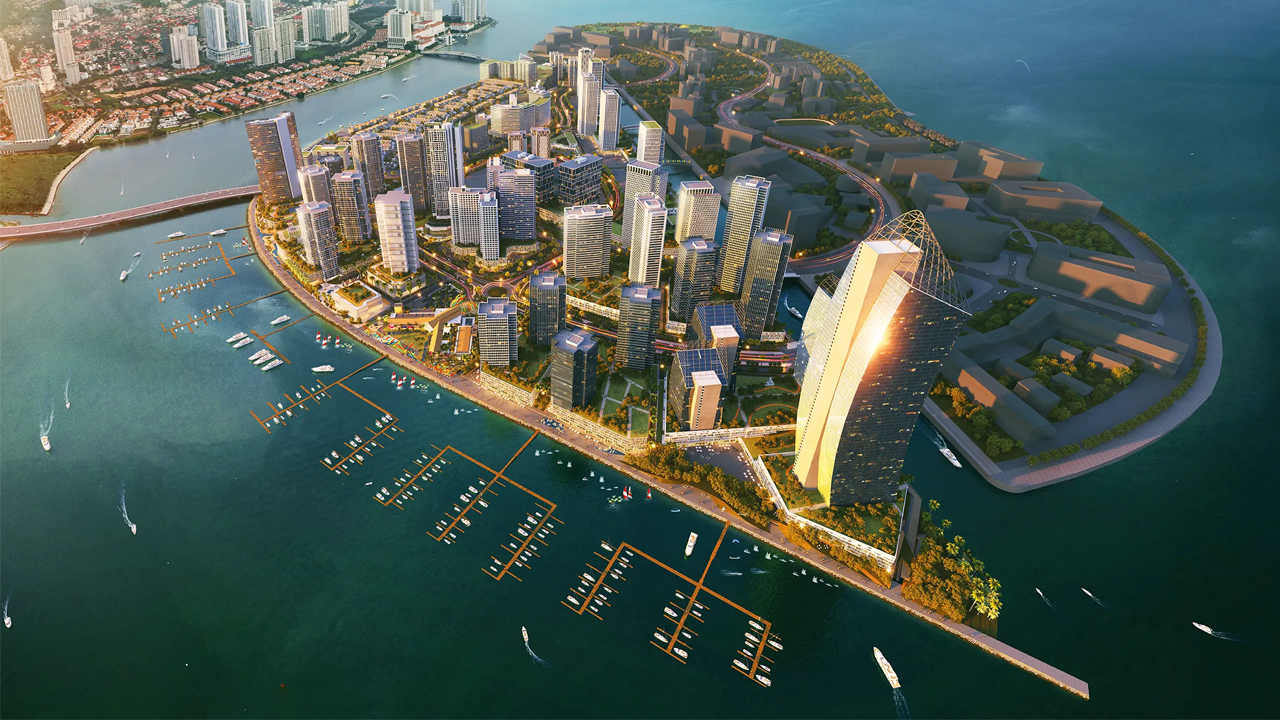15-Minute Cities Explained
- Youtube Views 42,588 VIDEO VIEWS
The “15-minute city” is an urban planning concept where the key things you need – such as your grocery store, doctor, school or job – are all within a 15-minute walk or bike ride from your front door.
The idea is that this reduces car dependency, in turn helping to lower pollution, improve air quality, further cohesion between communities and enhance people’s overall quality of life.
THE CONCEPT was introduced and first given the “15-minute” label by Professor Carlos Moreno in 2016.
It’s an idea that reaches back to principles that have in fact underpinned human settlements – our villages, towns and traditional cities – for centuries, and sees planners attempt to tackle pollution and sustainable development in vast urban areas by approaching them as a series of smaller communities or villages, making up the overall whole.
By ensuring people have access to the main services and amenities they need nearby, car usage can be reduced, air quality can be improved, and communities can be brought closer together improving cohesion and helping reduce division.

15-minute cities exist across our current cities and societies already, and they have done for hundreds of years, if not millennia.
The label is new, and it’s emerged as urban planners have begun to specifically highlight such strategies as a way to successfully shape major urban centres – areas that have today grown to a scale few ever thought possible.
The Urban Population Boom
The wider context is that more people than ever are now opting to live in cities and urban areas. In fact, according to the World Bank, nearly 70% of us will choose to call a city home by 2050.
As our populations shift from rural to urban regions and as the climate emergency becomes more urgent, planners have been looking for new ways to sustain our cities, reduce their environmental impact and improve quality of life for the people living in them.
The “15-minute city” labelled concept has become increasingly popular since the pandemic when many urban areas found themselves experiencing reduced car usage and its benefits for the first time.
It’s seen as a way to get the advantages of being a big, thriving city without the high levels of congestion or pollution that often accompany it.
15-Minute Cities in Practice
The B1M and Tomorrow’s Build has covered the emergence of the 15-minute city label extensively over recent years.
Examples of the concept being either planned for or executed in practice include Barcelona’s super-block system (video below), Paris Mayor Anne Hidalgo’s plan to reduce car parking spaces and increase urban greening in the French capital and Saudi Arabia’s bold plan to build The Line – a 500-metre tall, 170-kilometre long mirrored linear city in the desert.
More subtly, developments like London’s Battersea Power Station, the striking Four Frankurt in Germany and Tokyo’s Azabudai Hills district all display the hallmarks of the 15-minute city concept.
The Conspiracy Theories Debunked
In 2023, a series of unfounded 15-minute city conspiracy theories began circulating online, across social networks and in specific areas of the media. These triggered on-street protests in some cities, including Oxford in the UK.
The theories propagated are often conflated with denial of the climate emergency, the pandemic and/or the effectiveness of COVID-19 vaccines.
The legitimate concerns of community groups wishing to quite-rightly engage in robust, reasoned and constructive dialogue around the development of 15-minute cities appears to have been hijacked by those seeking to make broader and more extreme political points.
Concurrently, short-tempered, pithy and/or dismissive statements from those defending the 15-minute city concept – particularly on social media – has sown further division and not helped to bring about the constructive dialogue that’s needed.
To inform people as far as we can, The B1M team has attempted to correct, clarify and explain the nuance behind some of these claims below.
We’ve also included some useful links to what we believe are fair and impartial sources of information on this topic.
1. Cars Are Not Banned
The 15-minute city concept merely aims to reduce car dependency, not restrict car usage or ban cars entirely.
Roads will still exist, and you’ll still be able to drive your car.
Some urban developments may choose to pedestrianise certain zones or create low traffic neighbourhoods (LTNs) – that’s nothing new and has been done for decades. As with almost any pedestrianised zone in any village, town or city, access is maintained for deliveries, those with disabilities, emergency services, special events and more.

Above: Paris Mayor Anne Hildago's plans for the city include reducing the number of car lanes on the Champs-Élysées, but not banning cars entirely. Image courtesy of PCA Architecture.
Some conspiracy theorists hold up the car as an object of liberty and independence – which indeed it is for any car owner – but such overly lavish and idealistic praise is perhaps misplaced.
Almost all national governments require cars to be registered with their owner’s name and address in a central database. In the UK they must be taxed annually, require a government-regulated test to drive, often contain trackable GPS navigation systems and must be driven on camera-laden roads along routes that were planned out by the state long ago. The highway code that all drivers follow was set out not by us but by our national governments.
Despite such oversight, the car seems to have escaped conspiracy.
2. Public Transport Is Not Restricted
Quite the opposite: 15-minute cities aim to further encourage public transport use.
Wider cross-city and suburban public transport systems will still be available for anyone wishing to use them; in fact such systems play a critical role in enabling people flow and economic growth in our urban centres.
3. People’s Movements Are Not Restricted
There are no restrictions on people leaving or entering a 15-minute city area, in fact the areas aren’t even clearly defined or physically demarcated.
You could still choose to drive to a shop, doctor, school, place of work or leisure activity that’s 10, 100 or 1,000 miles away if you wanted to.
The idea is to bring things closer, negating the need for people to drive everywhere.

Some conspiracy theorists believe that encouraging us to stay closer to home could be the slippery first step towards a more totalitarian society where people are held or “locked” into certain areas and prevented from leaving.
15-minute cities are not physically enclosed spaces. There is no evidence for this.
Useful Links
The debate around 15-minute cities is evolving, but the concept remains one that has been in place for decades. Amid the current noise it’s important to keep on top of the facts and recognise the nuance.
You might find these sources informative:
The B1M takes no responsibility for the content of third party websites.
We also debated 15 minute cities in this episode of The World's Best Construction Podcast. Have a listen below.








